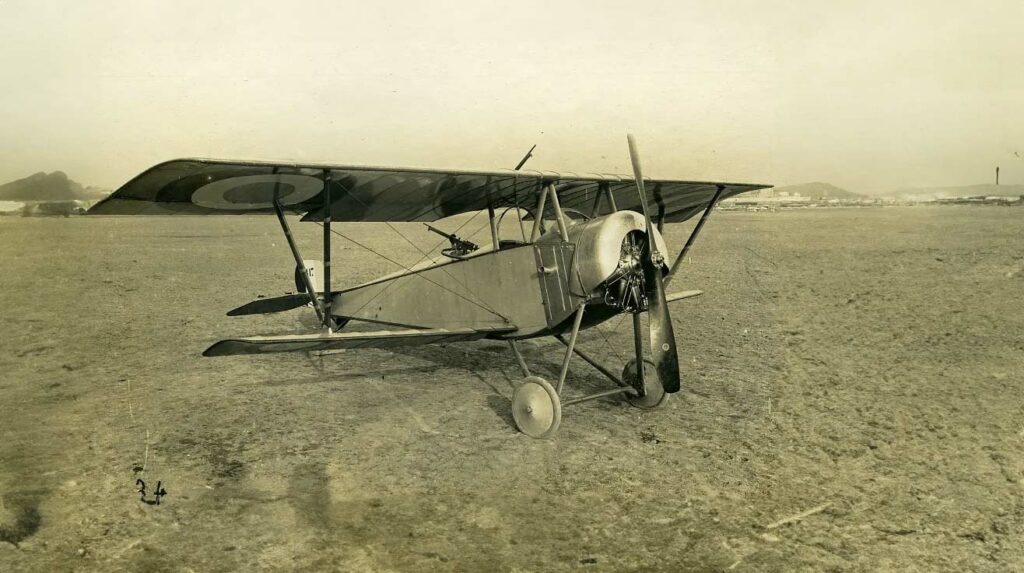Explore the Nieuport 12, a pivotal WWI French biplane, detailing its development, design, performance, and combat role. A comprehensive look at this historic aircraft.
This article provides an in-depth analysis of the Nieuport 12, a French biplane used during World War I. It covers the aircraft’s development history, design characteristics, performance metrics, military usage, and its impact on aerial combat during the war.
The Nieuport 12, a significant figure in the annals of military aviation, was a product of the technological and tactical evolution of World War I. This French biplane combined innovative design with effective combat capabilities, playing a pivotal role in the aerial warfare of its time.
History of the Development of the Nieuport 12:
In the early 20th century, the rapidly evolving field of aviation began to significantly influence military strategies. The outbreak of World War I in 1914 led to an urgent need for effective reconnaissance and combat aircraft. Nieuport, a prominent French aircraft manufacturer, responded to this demand by developing the Nieuport 12.
The Nieuport 12 was designed as an improvement over its predecessor, the Nieuport 10. Aimed at addressing the shortcomings of earlier models, it was intended to serve as both a reconnaissance aircraft and a light bomber. The development program was initiated by Édouard de Niéport and his team, with the first flight occurring in 1915.

Design of the Nieuport 12:
The Nieuport 12 featured a biplane configuration with a wingspan of 9.58 meters (31 feet 5 inches) and a length of 7.55 meters (24 feet 9 inches). Constructed primarily from wood and fabric, it showcased a sesquiplane design, where the lower wing was significantly smaller than the upper wing. This design offered better visibility and maneuverability but had the drawback of structural weaknesses under extreme stress.
The aircraft incorporated a fixed tailskid landing gear and was equipped with a single forward-firing machine gun for the pilot and a flexible machine gun for the observer, a notable armament configuration for the time. Its advancements in design laid the groundwork for subsequent fighter aircraft.
Performance of the Nieuport 12:
Powered by a Clerget 9B rotary engine, the Nieuport 12 delivered 130 horsepower (97 kW). It achieved a top speed of approximately 165 km/h (103 mph) and could reach a maximum altitude of about 4,000 meters (13,123 feet). With an operational range of 250 kilometers (155 miles), it was capable of fulfilling both reconnaissance and light bombing missions.
When compared to contemporary aircraft like the German Albatros fighters, the Nieuport 12 was generally on par in terms of speed but lagged slightly in armament and durability. However, its maneuverability was a key strength.
Military Use and Combat of the Nieuport 12:
In combat, the Nieuport 12 served primarily with the French Air Service and the Royal Flying Corps. It participated in various key operations, providing crucial aerial reconnaissance and engaging in dogfights. Its armament, consisting of the forward and rear machine guns, was effective against enemy reconnaissance aircraft but less so against more heavily armed fighters.
The Nieuport 12 was also used by Russia and Italy, demonstrating its moderate popularity. However, it was eventually outclassed by newer designs and was replaced in front-line service by more advanced aircraft like the Nieuport 17.
The Nieuport 12 represented a significant step in the evolution of military aircraft during World War I. Its design and performance characteristics reflected the technological advancements and tactical requirements of the time. While it was eventually superseded by more advanced models, its contribution to aerial warfare and its influence on future aircraft designs remain noteworthy.
Back to the Warbirds section.